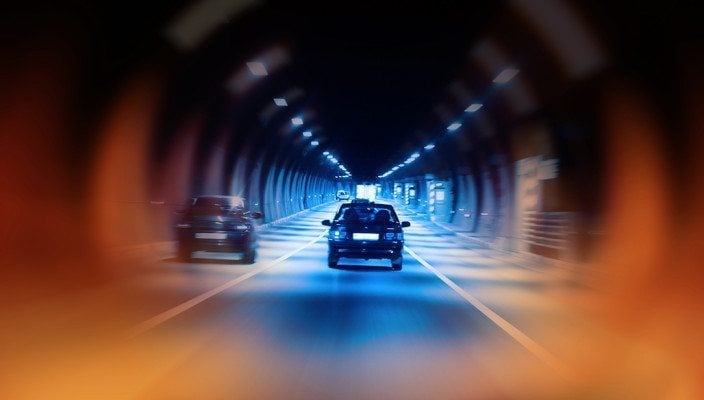Driverless cars, pizza and field service: Part One
Jul 05, 2015 • Features • Fleet Technology • fleet technology • driverless cars • Technology
Driverless cars have been on the horizon for a number of years now, however it seems the shift from exciting prototype to functional reality is coming ever closer and at ever-greater speed. Kris Oldland reviews developments in a two-part feature.
With the UK government sanctioning trials on public roads this year in Bristol, Greenwich, Milton Keynes and Coventry, that functional reality is now becoming highly tangible here in the UK , especially as UK ministers have now ordered a review of the UK's road regulations to provide appropriate guidelines.
Indeed driverless vehicle production is seen by the British government as a major area that can help continue to drive the UK economy away from the austerity path undertaken in the last five years. Former Business Secretary Vince Cable revealed the details of the new plan at a research facility belonging to MIRA, the automotive engineering research organisation based at Nuneaton. He commented that the manufacture of driverless vehicles is “putting the UK at the forefront of this transformational technology and opening up new opportunities for our economy and society".
However, whilst Britain may feel it is in pole position to take advantage of this technology the truth is that the UK is behind not only other countries in terms of development but also behind their own schedule as well. The Department for Transport had originally pledged to let self-driving cars be trialled on public roads by the end of 2013 but concerns about legal and insurance issues restricted driverless cars to private roads until the recently announced trials.[quote float="left"]Manufacture of driverless vehicles is putting the UK at the forefront of this transformational technology.
California, Nevada and Florida in the USA, plus Japan and Sweden are all undertaking tests and there is a veritable who’s who of the automotive industry joining the race to develop driverless cars alongside the much hyped Google Car.
Most experts predict that we will see driverless cars potentially in the five to ten years.
Mark Fields, CEO of Ford, has estimated that fully autonomous cars will be available by 2020. Elon Musk, Tesla CEO also agrees with this, stating: “Five or six years from now we will be able to achieve true autonomous driving where you could literally get in the car, go to sleep and wake up at your destination.”
However, Musk also added that there would likely be a further 2 to 3 years for regulatory approval.
Meanwhile luxury brand Jaguar has admitted that autonomous driving for them will be a reality by 2024 with similar claims from Audi, Daimler, Nissan and many others also in the offing.
Of course the label "driverless vehicle" sounds like an incredible leap forward but technologies such as cruise control, autonomous tic braking, anti-lane drift and self-parking functions are already built into many vehicles offering a certain degree of autonomy.
That said there are still a number of additional technologies that are key to driverless vehicles being successful.
One such innovation is Lidar (light detection and ranging), a system that measures how lasers bounce off reflective surfaces to capture information about millions of points surrounding the vehicle each and every second. This type of technology is already used to create online maps used by the likes of Google and Nokia.
Yet another complimentary technique is "computer vision" - the use of software to make sense of 360-degree images captured by cameras attached to the vehicle. This can help warn of hazards like pedestrians, cyclists, roadworks and other objects that might be in the vehicle's path.
Then there is global-positioning system (GPS) location data from satellites; radar; ultrasonic sensors to detect objects close to the car; and further sensors to accurately pinpoint a vehicle's orientation and the rotation of its wheels, to help it understand its exact location.[quote float="right"]A number of additional technologies are key to driverless vehicles being successful.
And it’s not just automotive companies getting involved in the development process.
Leading Swiss telecom provider Swisscom has reported on the first test-drives of an autonomous car equipped with sensors, computers and special software. The car is being trialed around the streets of Zurich with two human passengers on board.
However, Swisscom claim they are not trying to gain a share in the auto-making market but instead want to understand how to apply the innovations of digital communications network in this sector.
“Swisscom is not turning into a car manufacturer. But future innovations in the automotive industry will centre on networking with the environment. For this reason, the driverless car is a prime example of digitisation and therefore of great interest to us,” said company official Christian Petit in a statement.
The software developed by Swisscom is used to give driving instructions and analyze data. The board computer powers, steers and brakes the car. Radars, video cameras and laser scanners are used to detect nearby vehicles and pedestrians. Germany's AutoNomos Labs, which has run similar tests in Berlin, has also participated in the project.
Look out for the second part of this feature where we reveal Wikipedia’s Jimmy Wales’ suggestion on how driverless cars could revolutionise the pizza delivery industry (and probably field service too!)





















 Field Service News is published by 1927 Media Ltd, an independent publisher whose sole focus is on the field service sector. As such our entire resources are focused on helping drive the field service sector forwards and aiming to best serve our industry through honest, incisive and innovative media coverage of the global field service sector.
Field Service News is published by 1927 Media Ltd, an independent publisher whose sole focus is on the field service sector. As such our entire resources are focused on helping drive the field service sector forwards and aiming to best serve our industry through honest, incisive and innovative media coverage of the global field service sector.
Leave a Reply